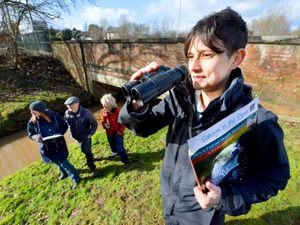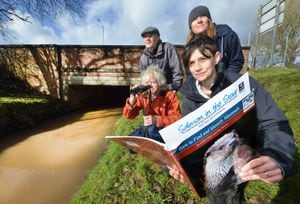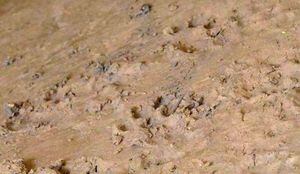Otterly awesome: Black Country volunteers track down elusive otters - with VIDEO
Volunteers have been out across the Midlands searching for otters as part of a wildlife survey.

The Wildlife Trust for Birmingham and the Black Country has been looking for the animals to try to gauge how many otters there are across the region.
Otter numbers have risen nationally and the Trust is looking for see if that rise has been reflected locally – particularly around the River Stour.
Volunteers have been out in November, December, January and this month as they looked to get a picture of otter activity in the region.
Biodiversity and Planning Officer Hannah Lewis has discovered signs of otter where a housing development had deculverted a 500m section of the river, bringing it back above ground where it had previously been diverted below.
It is the first time signs of otter were spotted in this location.

Ms Lewis said: "This was an otterly awesome opportunity to find out more about these fascinating mammals.
"Where there is evidence of otter populations we will know that the Stour is in good health, conversely absence of evidence will help us plan improvement works.
"A healthy river is important for wildlife, but for us too. Clean rivers mean clean water, clean rain and fewer pollutants in our food chain."
The project is part of Salmon in the Stour, a partnership between the Environment Agency, The Wildlife Trust for Birmingham and the Black Country, Worcestershire Wildlife Trust and the Severn Rivers Trust) and covers the whole of the River Stour catchment.
This includes the Stour itself as well as the many smaller watercourses that join it along its route.
Many parts of the river have been diverted underground, others are heavily affected by industrial pollution and fly tipping creating barriers for wildlife.

Now the partnership is working to identify and remove barriers so all kinds of wildlife, including salmon and otter, can thrive.
Once an important industrial watercourse, today the Stour acts as a vital green and blue corridor, bringing wildlife, including otters and kingfishers, right to the heart of Stourbridge and the surrounding towns and villages.
Otters have long, slim bodies and relatively short limbs. Their most striking anatomical features are the powerful webbed feet used to swim, and their seal-like abilities holding breath underwater.
Most have sharp claws on their feet and all except the sea otter have long, muscular tails.
Fish is the staple food in most otters' diets – often supplemented by frogs, crayfish and crabs.
Otters are active hunters, chasing prey in the water or searching the beds of rivers, lakes or the seas.
Most species live beside water, but river otters usually enter it only to hunt or travel, otherwise spending much of their time on land to avoid their fur becoming waterlogged.





